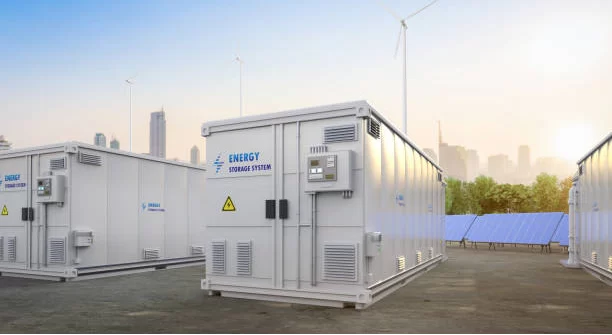Unveiling the Battery Storage Units of Liquid-cooled Containers: From Concept to Application
In the pursuit of efficient and reliable energy storage solutions, the advent of liquid-cooled container battery storage units has emerged as a game-changer. This article aims to take you on a comprehensive journey, starting from the fundamental concept and delving into the intricate process of their evolution towards practical applications, highlighting their significant historical development and real-world value.
The concept of battery storage units is not new; it has been a subject of exploration and research for decades. The idea behind it is simple yet profound – to store energy generated at one time for use at another, thereby addressing the intermittent nature of many energy sources and optimizing the overall energy supply-demand balance. However, the specific application within the framework of liquid-cooled containers brings a new dimension to this concept.
At the core of a liquid-cooled container’s energy storage unit is the integration of advanced battery technologies. These batteries are carefully selected and configured to offer high energy density and power output. The liquid cooling system, on the other hand, acts as a critical component to maintain the optimal operating temperature of the batteries. This is crucial as temperature fluctuations can significantly impact battery performance, lifespan, and safety.
In the early stages of development, researchers and engineers were faced with numerous challenges. One of the primary obstacles was achieving efficient heat dissipation. Traditional air cooling methods proved insufficient for the high-power and high-density battery packs used in these containers. This led to the exploration and adoption of liquid cooling techniques, which offered superior heat transfer capabilities.
The choice of coolant also underwent extensive research and experimentation. Different fluids, such as water-glycol mixtures or specialized dielectric coolants, were evaluated based on their thermal properties, electrical insulation, and compatibility with the battery chemistry. Additionally, the design of the cooling channels and the flow patterns within the container required precise engineering to ensure uniform cooling across all battery cells.
As the technology matured, improvements were made not only in the cooling aspect but also in the battery management systems (BMS). The BMS plays a vital role in monitoring the state of each battery cell, including voltage, current, and temperature. It ensures that the batteries are charged and discharged within safe limits, maximizing their lifespan and performance.
The transition from the laboratory to practical applications was marked by several key milestones. One notable application was in large-scale renewable energy integration. Solar and wind farms, which generate electricity intermittently depending on weather conditions, could now store excess energy in liquid-cooled container battery storage units. This stored energy could be dispatched to the grid during periods of low renewable generation, enhancing the reliability and stability of the power supply.
Another significant application was in providing backup power for critical infrastructure such as data centers and hospitals. In the event of power outages, these energy storage units could kick in instantly, ensuring uninterrupted operation and safeguarding essential services.
In the industrial sector, liquid-cooled container battery storage units have enabled factories to implement peak shaving strategies. By storing energy during off-peak hours when electricity prices are low and discharging it during peak hours, businesses can significantly reduce their energy costs.
The transportation sector has also benefited from this technology. Electric vehicles and public transportation systems can utilize these energy storage units for fast charging, extending the range and operational efficiency of the vehicles.
Looking ahead, the potential of liquid-cooled container battery storage units is vast. Continued research and development efforts are focused on increasing energy density, reducing costs, and improving the overall durability and safety of the systems. Advancements in materials science, battery chemistries, and thermal management techniques hold the promise of even more efficient and sustainable energy storage solutions.
In conclusion, the journey of liquid-cooled container battery storage units from concept to application has been a remarkable one. It has not only transformed the way we think about energy storage but also holds the key to a more sustainable and resilient energy future. As we move forward, these innovative solutions will undoubtedly play an increasingly crucial role in shaping our energy landscape and meeting the growing demands of a modern society.

